Book: 'I Only Want You to Love Me' by Miles Aldridge
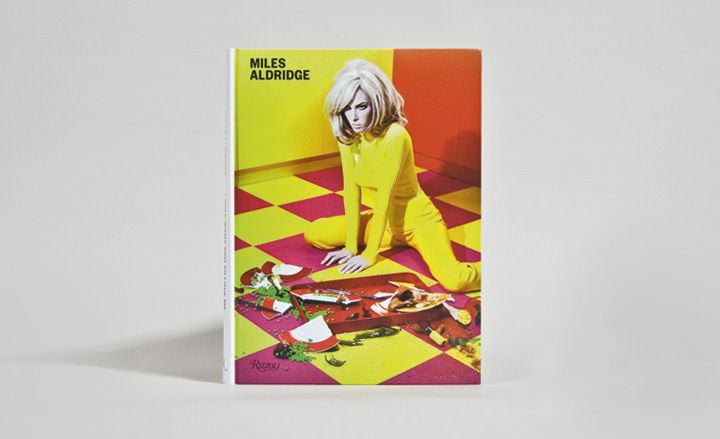
The women in Miles Aldridge's latest book of photographs are fashionable to the extreme, styled to an almost supernatural standard. Their faces are made up in 'Dynasty' jewel tones and their bodies bedecked with the real stuff - worth every penny of the million bucks they look. Yet 'I Only Want You to Love Me' is no book of fashion. Of fashion victims, more like.
Aldridge is more concerned with the dramas under the clothes, the question mark hanging over the head (or around the neck) of his subjects. When he spoke with us two years ago about his 'Lost Weekend' fashion shoot for our Wallpaper* 150 issue, the photographer mentioned a line from James Joyce's 'The Dead' that resonated in his work: '... what is a woman standing on the stairs in the shadow, listening to distant music, a symbol of?' His job is to present a problem masked by a thick coat of slap; ours is to try and strip away the veneer.
A selection of the W*150 images appear in 'I Only Want You to Love Me', slotted into the vaguely threatening domestic narrative. The fembots, seductresses and desperate housewives are all the more intriguing for Aldridge's telltale palette of Hitchcockian, almost hallucinatory colour. Pure beauty, they seem to say, cannot exist without some underlying menace.
Aldridge, whose photographs will appear in exhibitions at both Somerset House and Brancolini Grimaldi this summer, spoke with us in London...
So tell us first: why is it time for another book?
This book is very different to my first book [‘Pictures for Photographs’, published by Steidl]. I think it contains a more easily consumed statement about the world. The Steidl book was an interesting luxury item about my work – but this one is a sort of manifesto, a statement of intent, spoken through these women. Because of the relentlessness of the message about this sort of malaise of modern life, I think it works as a much more cohesive war cry - quite a potent one, I think. I wanted it to be easily absorbed, in the same way as a box of Cornflakes, which is also very attractive and colourful.
What would you say is this manifesto?
It materialised through my years working as a fashion photographer, where the commerce of the fashion business meets art, and joins the lineage of greats like Avedon, Penn and Newton in reinterpreting the fashion being presented on the runways in order to express what I feel about the world these clothes are being delivered to. I think fashion is, on one level, very banal, about making your boobs look great or your arse or the colour of your eyes, but, aside from that, there are great fashion designers. And I like to think fashion photographers don't work in a vacuum and are the barometer of where the human race is going.
I'm aware, because I've lived with models [his sisters are Saffron and Lily Aldridge] and my wife is a model, I've lived with these beautiful creatures and my understanding of this beauty is that even at that high level it doesn't equate contentment. My work is where fashion and commerce crash into the reality of living in the 21st century. I suppose the message is this unease with consumer products and this cynical view of colourful, shiny things. A slightly uncomfortable quality is what I'm after. I don't feel like making happy pictures about beautiful models being content.
You open with a blank, beige 'sexy secretary' character, an almost synthetic office-bot in a neutral setting. That seemed out of character...
The cover is a full assault on the senses, and like working on a piece of music, I had to bring it down before raising it up again. I didn't want the book to be like Willy Wonka's chocolate factory from beginning to end. So there's a quietening down of the picture and the removing of expressiveness and feeling that brings you back again to the moment. I've always hoped I could stop people turning the page and give them something they're attracted to but not sure why, make them feel a bit unsettled. Something that resonates longer is what I'm after.
What's interesting to me is that my work has been about these women who look empty, like they haven't got a thought in their heads, but actually they have so many thoughts they become blank, seemingly expressionless, as one does when one's thinking. I always think of the android [Pris] from 'Blade Runner', the 'basic pleasure model'. What I'm trying to convey is not that these people are vacuous and empty because the culture is so appalling and damaging - it's more that it's confusing.
This is a body of work that took years to accumulate and yet the storyline almost seems seamless. There are a few exceptions: the rapturous Virgin Mary portraits are some. Can you tell me the story behind them?
It's funny, Jean-Paul Gaultier was very generous when he said, 'I did Madonna too, and you did yours better.' But the idea to do them came after having been to Andalucia for Semana Santa, or Holy Week, and I saw something I wasn't expecting to see: coming down these incredible windy streets were these gigantic Fellini-style Madonnas carved from wood that must have weighed as much as a London bus. They came swaying down with candles to the sound of coronets. Combined with Spanish white wine, it was a very heady, sexy experience, and not only a sacred event but an erotic one. And that's how I interpreted it. Then I was in the studio with the model being the Madonna, and that day I enjoyed clicking my shutter when she rolled her eyes back.
And the use of water - from the shower, from the rain, from sweat. You've spoken about baptism themes in your work before. Are these women cleansing some sort of sin?
I can only assume my interest is the same as cigarette smoke - both effects in cinema look beautiful. And I don't smoke, but a woman's exhalation, basically coming out of her mouth towards you, is an almost ectoplasmic sex message. Hollywood directors in the 1930s got excited about cigarette smoke for its amazing ability to turn a woman into a kind of goddess.
One of the most erotic shots I've seen was in 'Raging Bull', when a bloody sponge was squeezed over De Niro's torso and camera pans down as the liquid falls in slow motion… I've probably spent way too much of my life watching movies. Recently I went through a period of playing 'Psycho' every morning before doing anything. By watching it and watching it some more, it became liberated from the dialogue and I was able to just absorb the pictures. I recommend it to anyone.
There's a noticeable absence of men in your photography - with, again, a few exceptions in the book. What do they represent when they do appear?
You'd think if I were an author that my protagonist would be a man - my journey, my world, my misery. But strangely not. Maybe I'm feeling competitive. Maybe I don't like other men around me? Possibly there's also the sense of the voyeur…
Are the children in your narratives to be pitied? Or are they complicit in the actions of the older characters?
Certainly I think children are innocent in my world. And because I'm a father and I was a child myself, they represent what I remember from my own childhood - these grown-ups, when you're a child, you look at them with awe. I remember asking at school, 'Why am I me and not him?' I thought if I thought really hard, I would be him and not me. The thing is, you get to be 48 and you still have the same questions. The children [in my work] are there for the supposed intelligent adults to be seen against. And anyway, a beautiful woman being beautiful is really not interesting at all. I find all that beauty rather stifling, having grown up around it. But if the woman is picking up someone from ballet class, then they become part of some sort of fictional world.
You seem fascinated by some combination of past eras - the 1950s, '60s, '70s even '80s. Are you inspired by real-world women - not Hitchcock blondes or Hollywood seductresses but rather products of our current age?
I'm interested in Hollywood because it's an amazing way to suddenly see a woman in some kind of jeopardy, like accelerated living. For someone who has my job, it's a good way to get women falling out of airplanes… stuff you don't normally see. But walking the streets of New York or London, there's beauty wherever I look.
I think about women a lot because I have too much time on my hands, but I also I link it with a lot of things I felt as a young man about my mother. There was a lot of domestic madness in my house, so the thoughts of that and of my mother, they combine with images I see in movies, too. I may see a girl on a bus, with her head pressed against the glass, and I may think of my mother on the Underground, and the Hitchcock film 'Strangers on a Train'. Having the shorthand of cinema language, I'm able to quickly make an equation. I certainly am not in love with the past at all, but I think I spend a lot of time in museums and in movies, endlessly sniffing around, looking for images to stimulate something. That's the way I work.
You've included a block of sketches at the back of the book that stand alone as works in themselves. Why did you make the decision to include them?
I'm proud of the sketches. The ideas are all there, but they're really evidence of me thinking, scratching the surface. You can see they're drawn very quickly without much concern. I always like drawing the women's boobs and waist, and I think that's part of the juvenile in me that hasn't gone away, like drawing on a school desk.
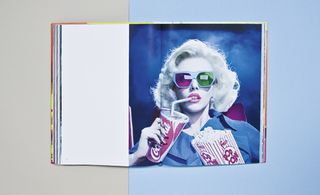
'3-D', 2010
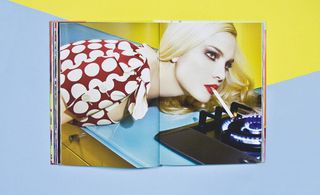
'Home Works #3', 2008
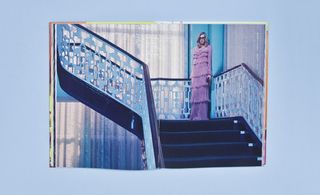
'Rooms #12', 2011, was shot for Wallpaper's 'Lost Weekend' fashion story in our September 2011 issue (W*150)
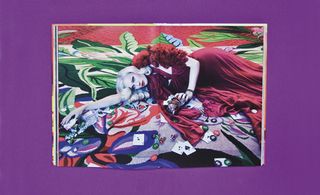
'Rooms #2' was part of the same shoot, and featured as a limited-edition cover for the issue, free to subscribers
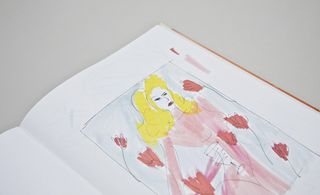
'Study for The Rooms', 2011
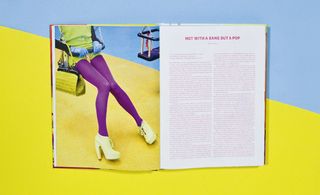
From left: 'The Last Range of Colours #12'; writer Glenn O'Brien provides the foreword to Aldridge's first ever monograph
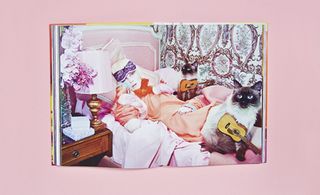
'Cat Story #3', 2008

'Shower #4', 2009
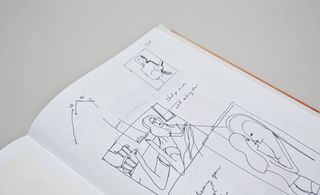
'Study for Doll's House', 2008
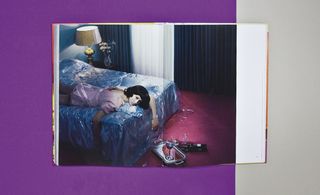
'Chromo Thriller #2', 2012
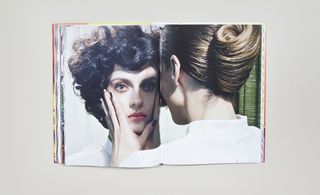
'So Many Questions #1', 2012
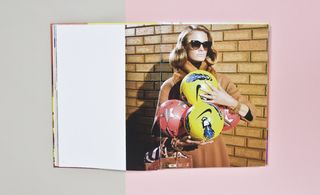
'A Perfect Mum #2', 2012
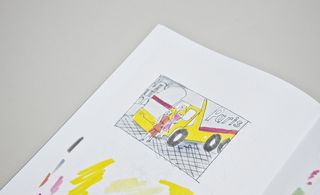
'Study for Open Tour', 2008
Wallpaper* Newsletter
Receive our daily digest of inspiration, escapism and design stories from around the world direct to your inbox.
Based in London, Ellen Himelfarb travels widely for her reports on architecture and design. Her words appear in The Times, The Telegraph, The World of Interiors, and The Globe and Mail in her native Canada. She has worked with Wallpaper* since 2006.
-
 What is hedonistic sustainability? BIG's take on fun-injected sustainable architecture arrives in New York
What is hedonistic sustainability? BIG's take on fun-injected sustainable architecture arrives in New YorkHedonistic sustainability: we explore the term and look at architecture studio BIG's take on being playful yet principled, with New York’s BIG U
By Emily Wright Published
-
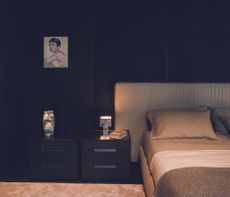 Ahead of Milan Design Week, Vincent Van Duysen gives us an exclusive tour of Palazzo Molteni
Ahead of Milan Design Week, Vincent Van Duysen gives us an exclusive tour of Palazzo MolteniMolteni’s immersive new design destination on via Manzoni is a seven-storey cultural powerhouse that extends far beyond the realm of home furnishings
By Laura May Todd Published
-
 MoMA names Christophe Cherix its new director
MoMA names Christophe Cherix its new directorThe Swiss-born curator has worked in the Museum of Modern Art’s drawings and prints department since 2007
By Anna Fixsen Published
-
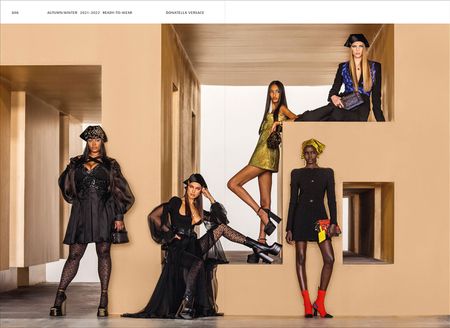 Now you can admire every Versace catwalk look from your bookshelf
Now you can admire every Versace catwalk look from your bookshelfDive into this Versace-celebrating book, which amasses more than 40 years of fashion shows and 1,200 catwalk images
By Laura Hawkins Last updated
-
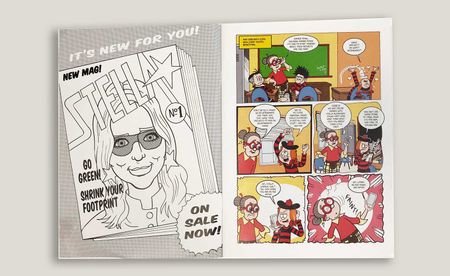 Fine print: the fashion brands getting bookish for S/S 2019
Fine print: the fashion brands getting bookish for S/S 2019By Laura Hawkins Last updated
-
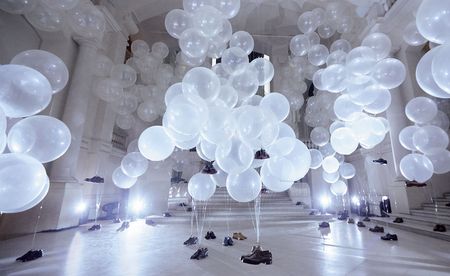 Show stopping: a new book traces Bureau Betak’s runway extravaganzas
Show stopping: a new book traces Bureau Betak’s runway extravaganzasBy Rosa Bertoli Last updated
-
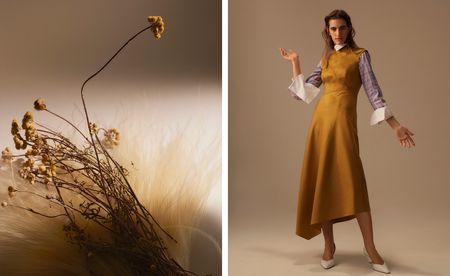 Second nature: sharp silhouettes and sculptural still lifes collide in Jaeha’s latest collection
Second nature: sharp silhouettes and sculptural still lifes collide in Jaeha’s latest collectionBy Sophie Bew Last updated